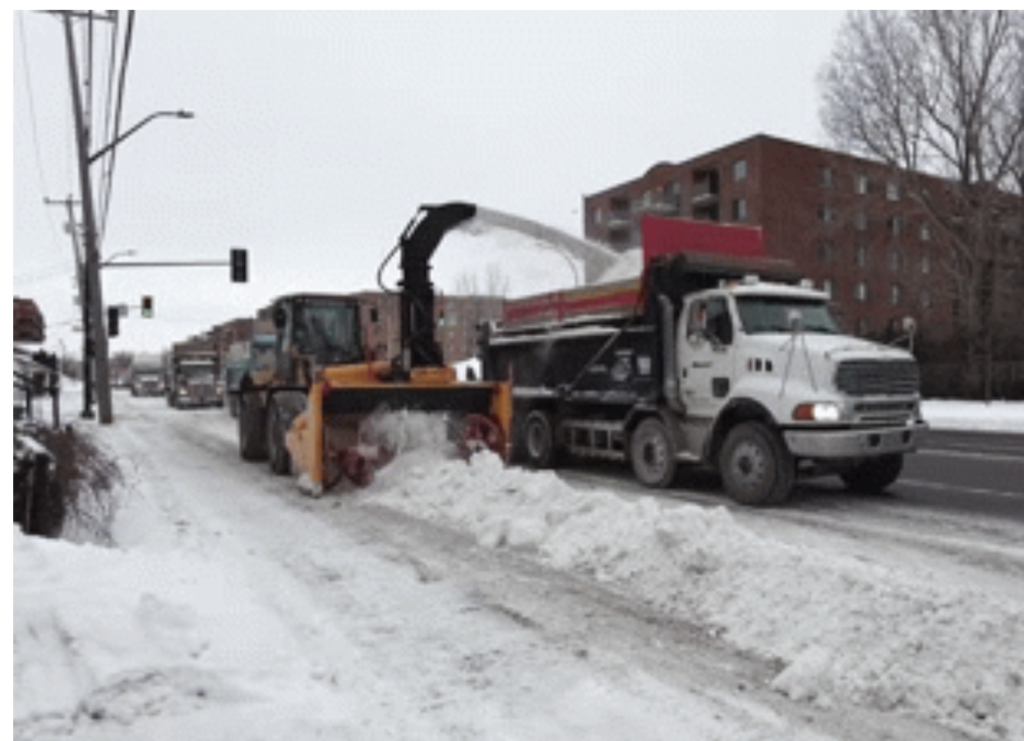Over a thousand pieces of equipment and as many operators to plow roads once 2.5 cm of snow has accumulated, and once we get 15 cm Montreal gears up into the DEFCON 1 equivalent of snow response operations. Maximum readiness. Immediate response. The first step is informing citizens when their streets will be cleared. In dense, downtown neighborhoods, most people park on the street and their cars need to move. No parking signs get installed block by block and notifications go out through the city-maintained snow removal app, InfoNeige (equivalent to InfoSnow in English). Municipal lots are opened up with free parking, and as one final warning, tow trucks blare a siren before hauling away any outstanding vehicles. Once personal vehicles are out of the way, scores of snowblowers and trucks
Topics:
Chris Blattman considers the following as important: Canada, miscellany, state capacity
This could be interesting, too:
Nick Falvo writes Homelessness planning during COVID
Nick Falvo writes Comparing municipal spending on housing and homelessness in Canada’s major cities
Nick Falvo writes Canada’s 2024 federal budget: What’s in it for rental housing and homelessness?
Nick Falvo writes Homelessness among Indigenous peoples
Over a thousand pieces of equipment and as many operators to plow roads once 2.5 cm of snow has accumulated, and once we get 15 cm Montreal gears up into the DEFCON 1 equivalent of snow response operations. Maximum readiness. Immediate response. The first step is informing citizens when their streets will be cleared. In dense, downtown neighborhoods, most people park on the street and their cars need to move. No parking signs get installed block by block and notifications go out through the city-maintained snow removal app, InfoNeige (equivalent to InfoSnow in English). Municipal lots are opened up with free parking, and as one final warning, tow trucks blare a siren before hauling away any outstanding vehicles.
Once personal vehicles are out of the way, scores of snowblowers and trucks descend upon the city, carving up snowbanks and carting them away. They march through the city in platoons, with a single blower trailed by a long line of empty trucks. After the first truck is filled, the next one in line moves up in a seemingly endless parade.
…The first wave of snow trucks makes their way to the city’s 16 sewer chutes, where loads of snow are plunged into the wastewater sewers through grates the size of a garden shed. The sewers below flow with hot water from the showers of Montreal’s two million residents
…These chutes process 25% of the city’s snow, and the meltwater flows through the sewers to the water treatment plant in East Montreal.
…Excavators are stationed nearby, and workers use them to crush any large clumps of snow through the holes and down the chute. Before another truck can pull up, another worker inspects the chute for obstructions.
…The other 75% of the snow is stockpiled in landscape dumps across the island of Montreal. …This ever-growing pile of snow is built up by an oversized snowblower, with blades twice as tall as the machines on city streets. Operations are carefully choreographed: when a truck enters the lot, the driver finds their place in the queue. The trucks are separated by size to ensure the snowblowers tackle equally sized piles of snow, keeping a consistent flow of material to build up the towering snow pile evenly.
…The final site we visited was the crown jewel of Montreal’s snow storage strategy: the Francon quarry. In decades past, it provided the limestone that built Montreal’s posh downtown districts. And since its retirement, it has become the city’s largest snow dump.
…At the top of its sheer limestone cliffs, trucks back up to the edge and send snow cascading down to collect in ever-broadening pyramids, eventually amassing 4.8 million cubic meters. It can take until the following autumn for the compacted snow to melt and get pumped out into the wastewater system.
From The Prepared. Via the excellent TMN.

